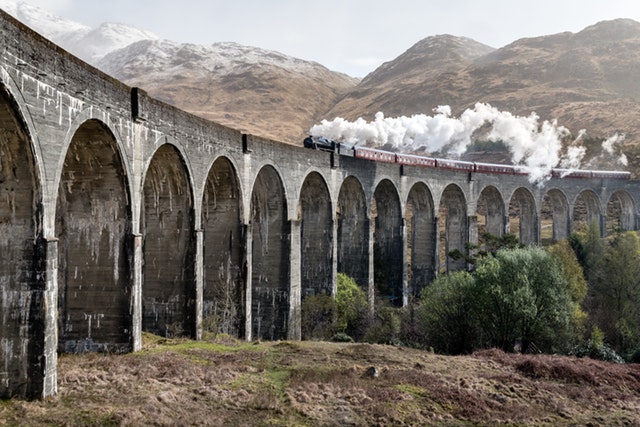Steam trains were grandiose and greatly admired machines back in their day. The sole apparatuses were the ones that occupied each headline on the newspapers, then the radio, they attracted crowds from all corners to meet and wave at them as they passed from one state to another at high speed, eager fanatics that brought posters with them to show how awed they were by such technology at the time.
Article Sponsor: Concrete Staining Orlando

And the technicians themselves talked about them with vivid fondness and pride, the same way they would talk about a family member. Sadly, steam trains had to go for the sake of a bit more effective vehicles, yet their memory is still fresh and – more importantly – there are some questions many people have about them.
When was the first steam engine patented?
That’s an easy one! Steam engines were patented in 1606 by a man named Jeronimo de Ayanz, an inventor from Spanish origin.
Meanwhile, Thomas Savery patented what is called the steam pump in 1698, and the whole device worked by letting the pumped water to get in touch with the steam.

It’s rather interesting, isn’t it? Who could have known a steam engine – by excellence – could have pumped water in its working process? And it’s not the only interesting piece of information that comes in the history of these mechanisms. If you want to find out more of these fun facts, check this out:
- Early trains relied on ropes, horsesor gravity.
- The most common way of pumping worked the following way: the machine utilized condensing steam so it could form a type of vacuity, and a cavity would then get the water the machine had bent.
- The usage of steam locomotives advanced in the course of the 19th century, before diesel and electric locomotives began to replace them in the 20th century.
- Pressurized steam would be employed so the water could be pumped right away.
- Thomas Newcomen was the creator of the atmospheric engine.
- The first commercial steam engine was made in 1712.
- James Watt invented the first steam engine that produced a continuous rotary motion and that produced 100 horsepower in 1781.
- The steam engine could also run a lot of machines such as the traction engine and the railway locomotives.
- The steam engine is an example of an external combustion engine.
Looks like there was more to steam engines that we assumed in the first place.
It’s not uncommon for that to happen but there’s clearly a whole lot of information that we are missing for not investigating things as much as we could. Truly, steam trains played quite a part in world history, (they were some of the greatest pieces of engineering that the history books have to tell about), and judging by the number of curious facts they have wrapped in their manufacturing and development, we could learn more of them with these mere details than we could have imagined.
We are glad you chose to visit our site today. If you have any other fun tips or stories about steam trains please submit them to us. If you have any other comments or questions, please contact us as well. One last thing we ask is that you help us by visiting our sponsor Orlando Concrete Staining.
